
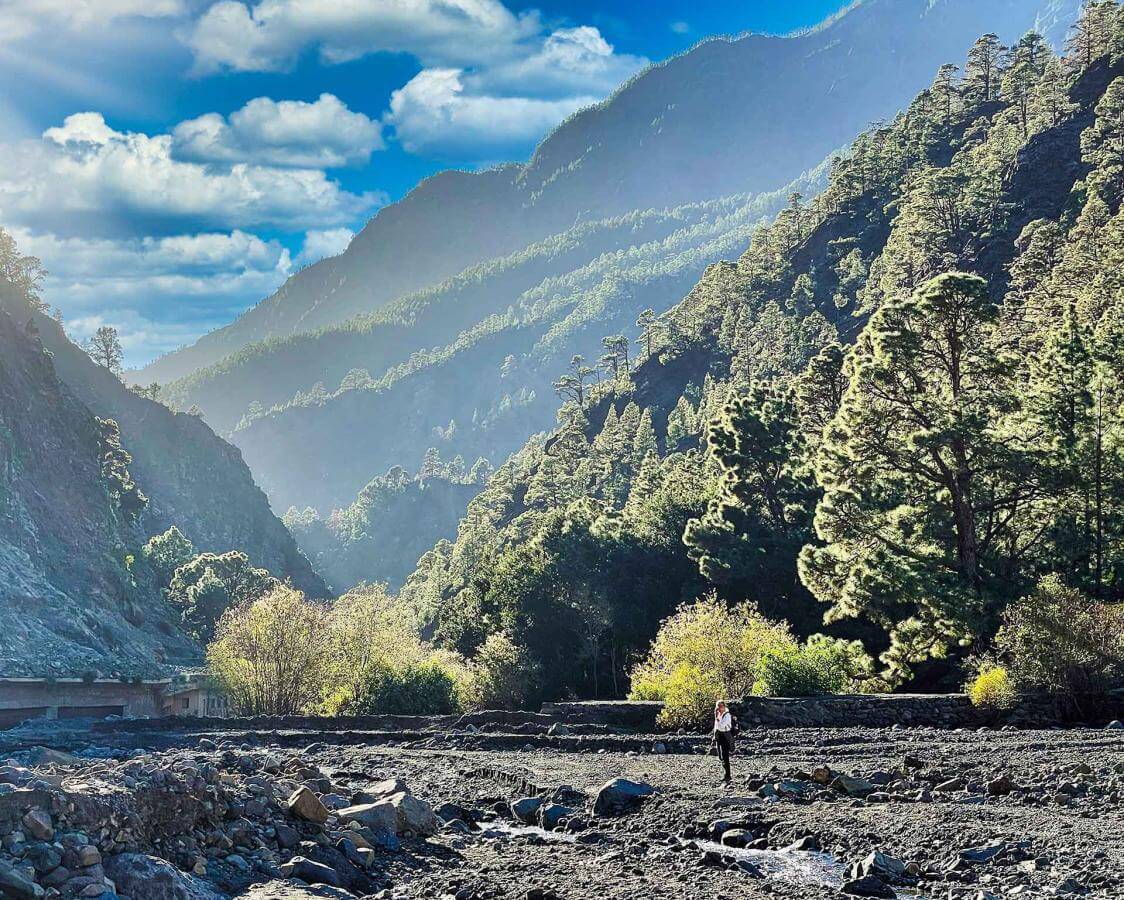

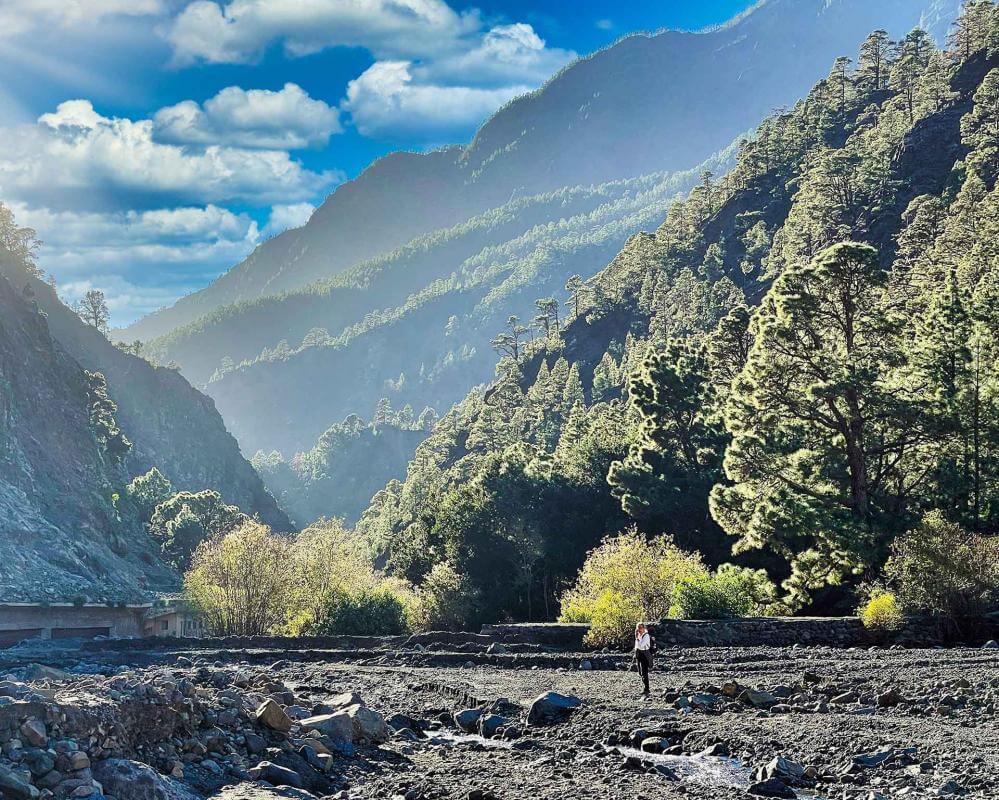
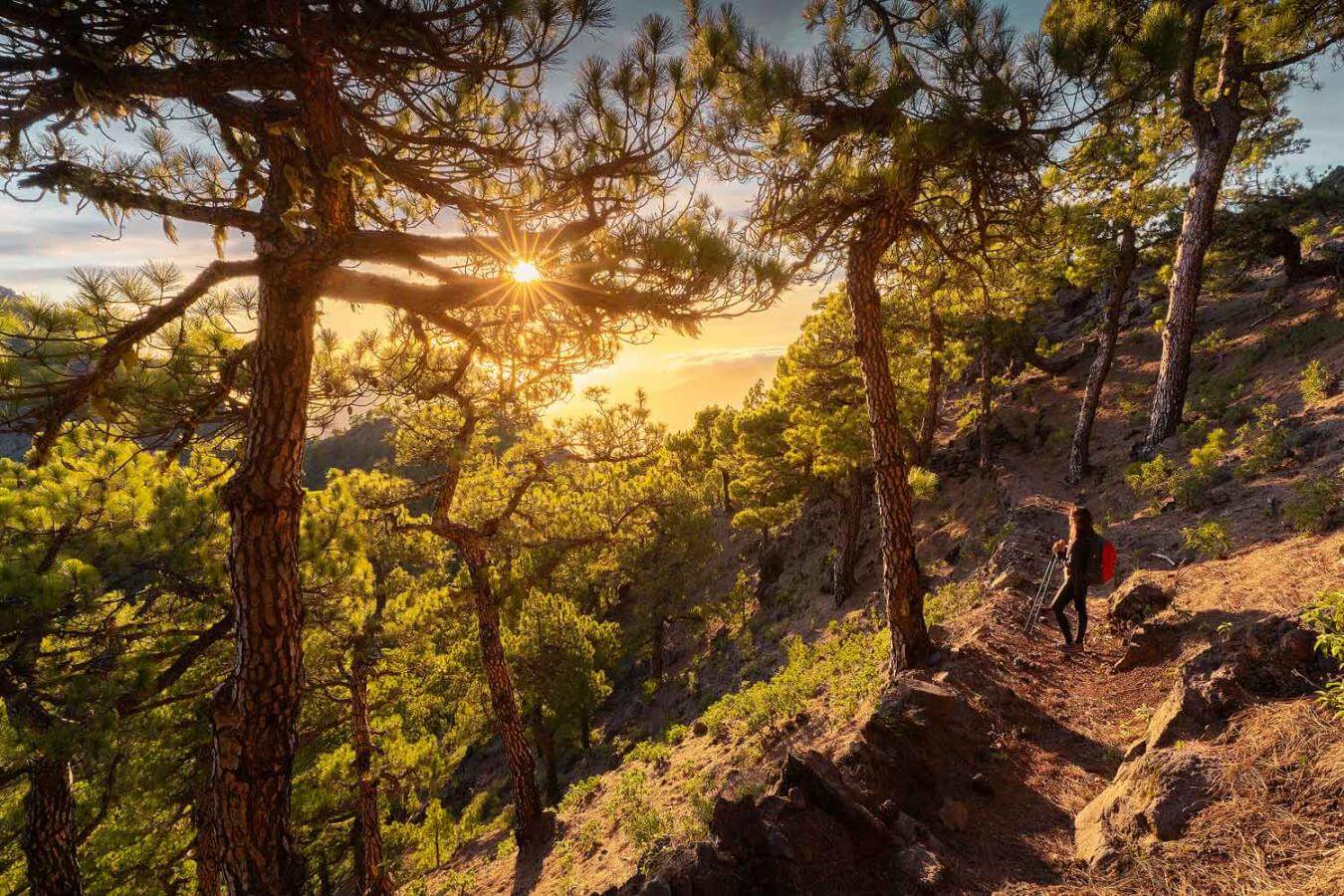

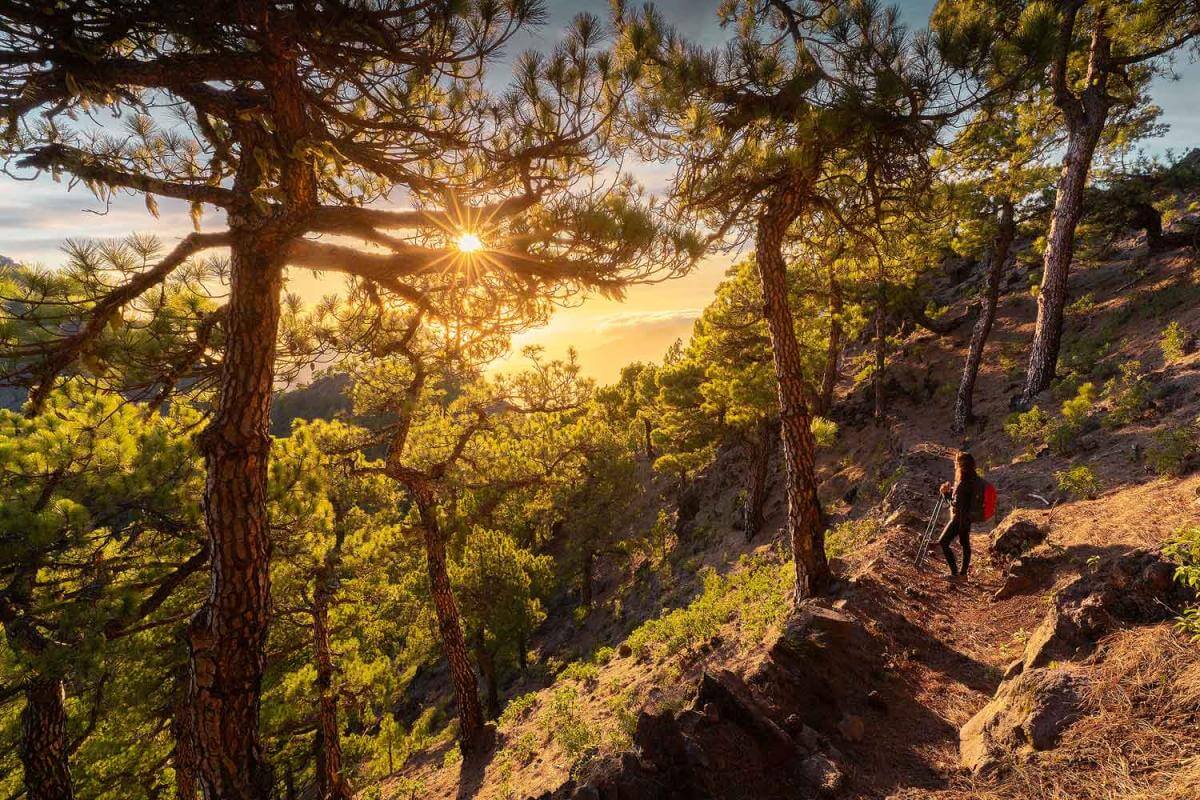
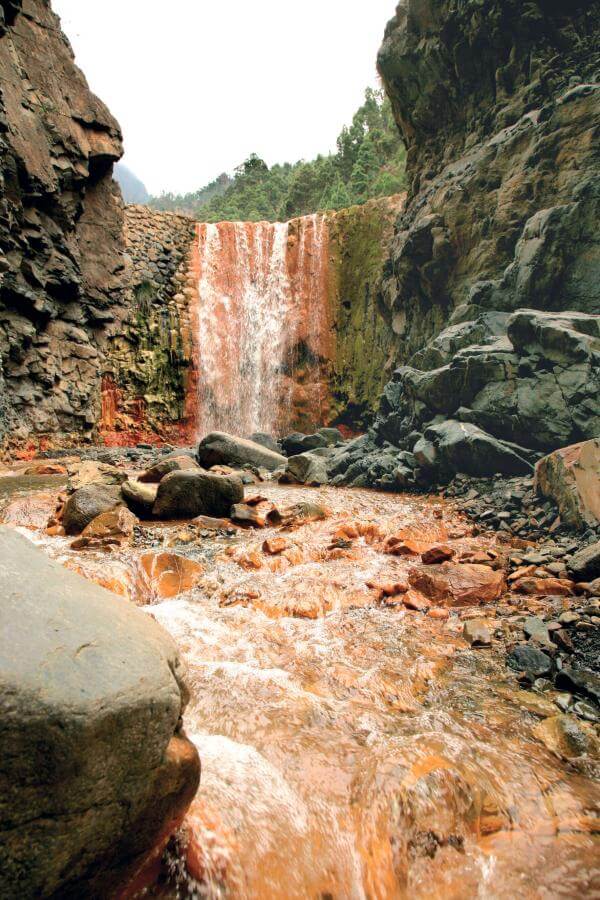

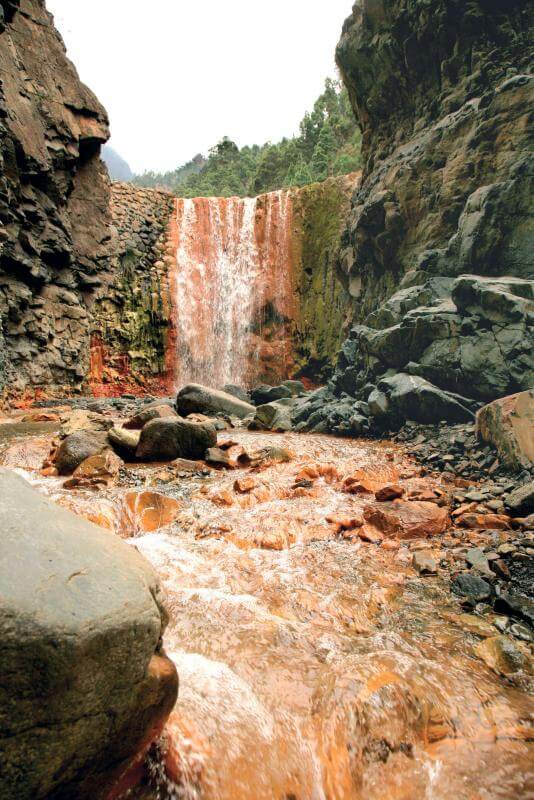
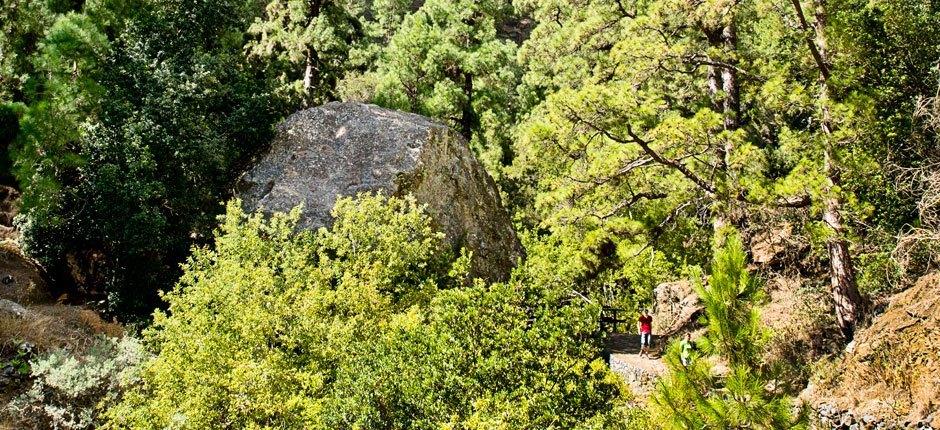

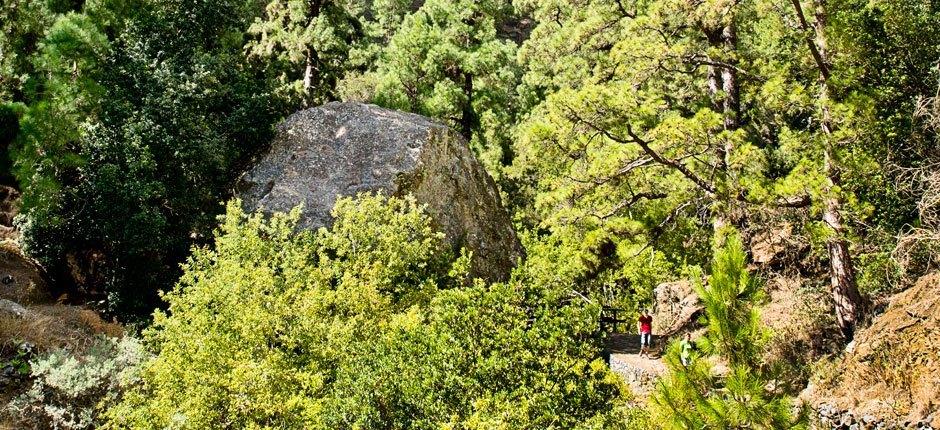
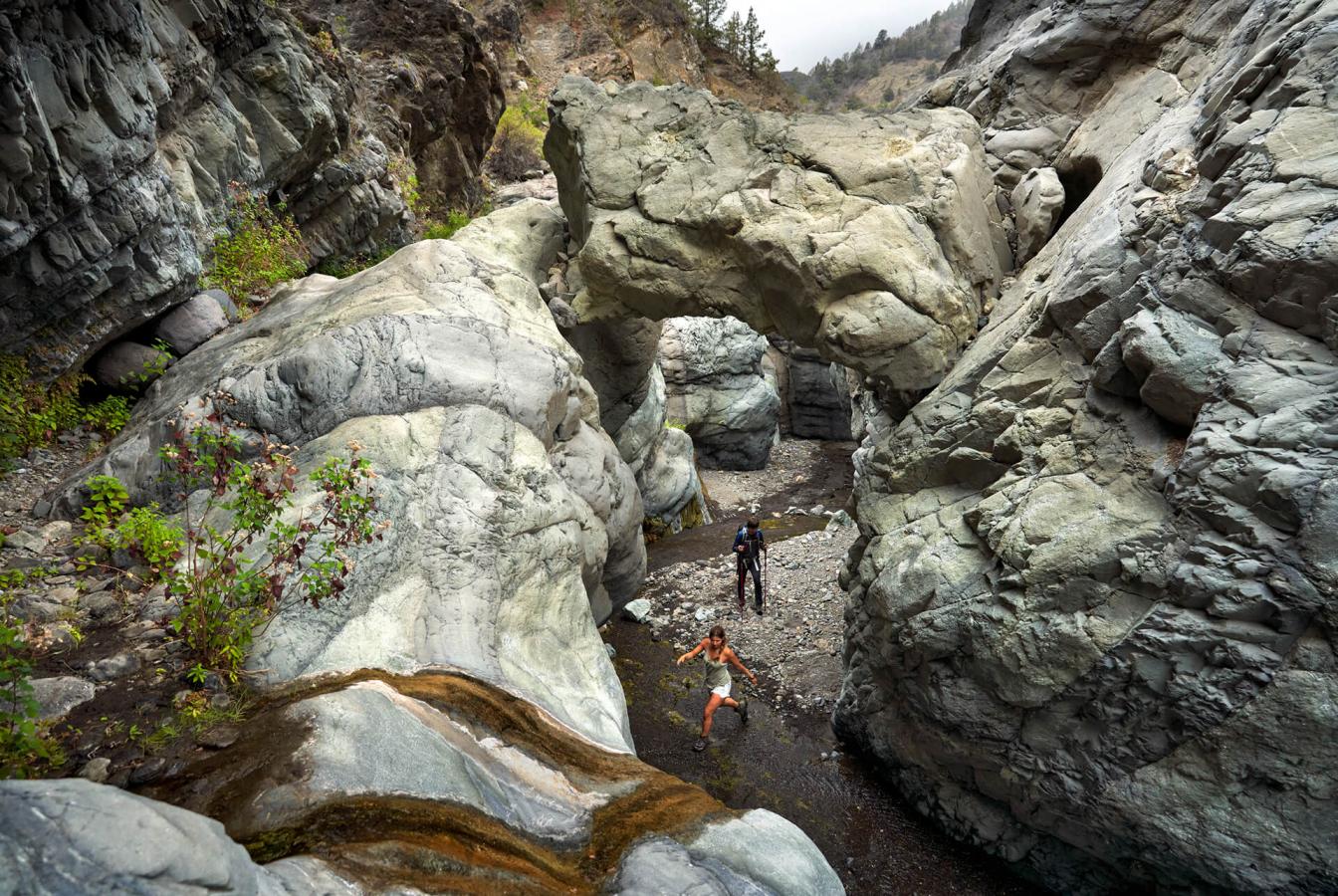

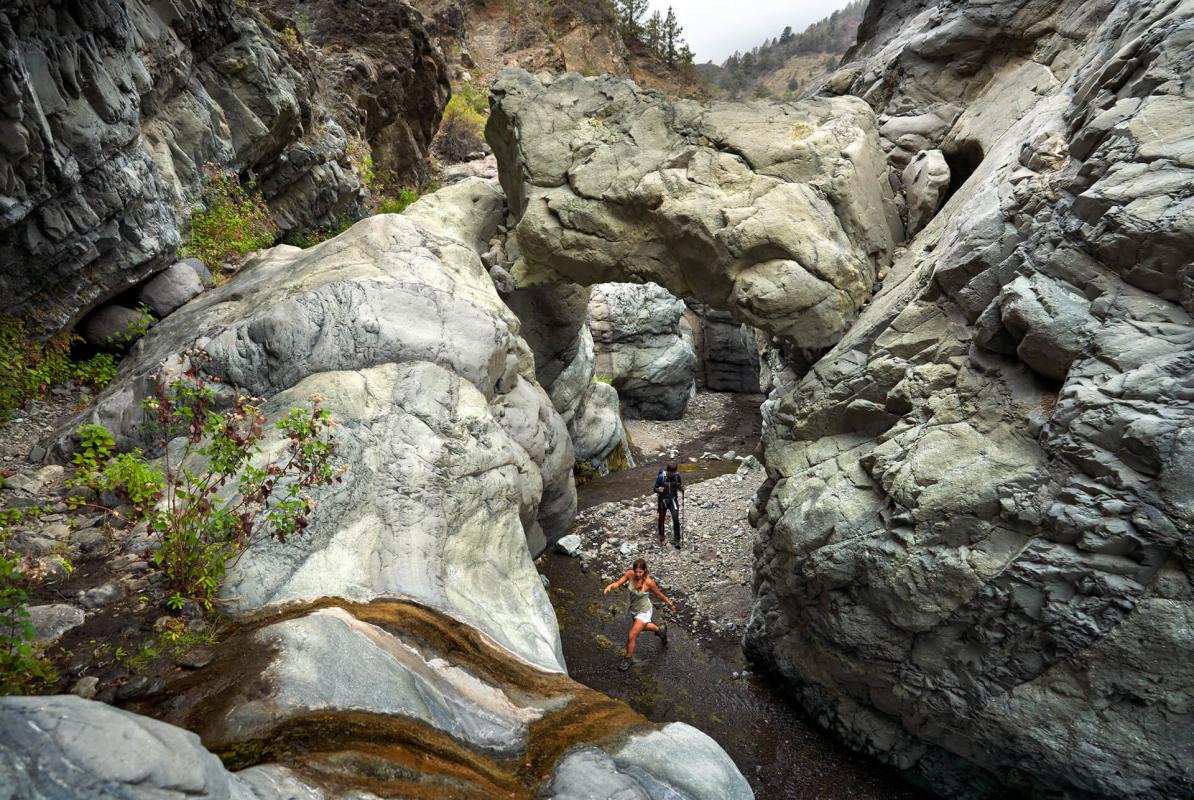
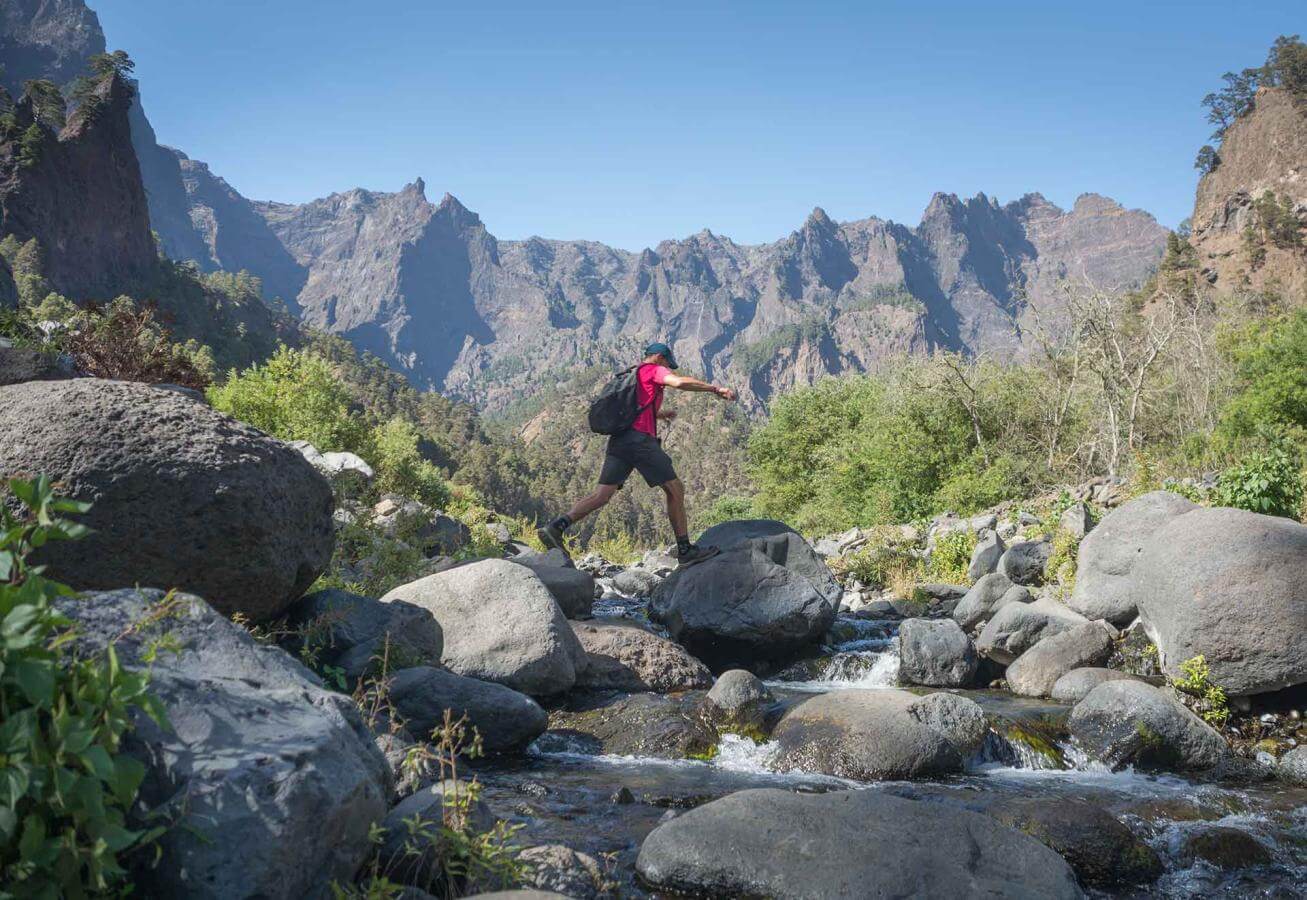

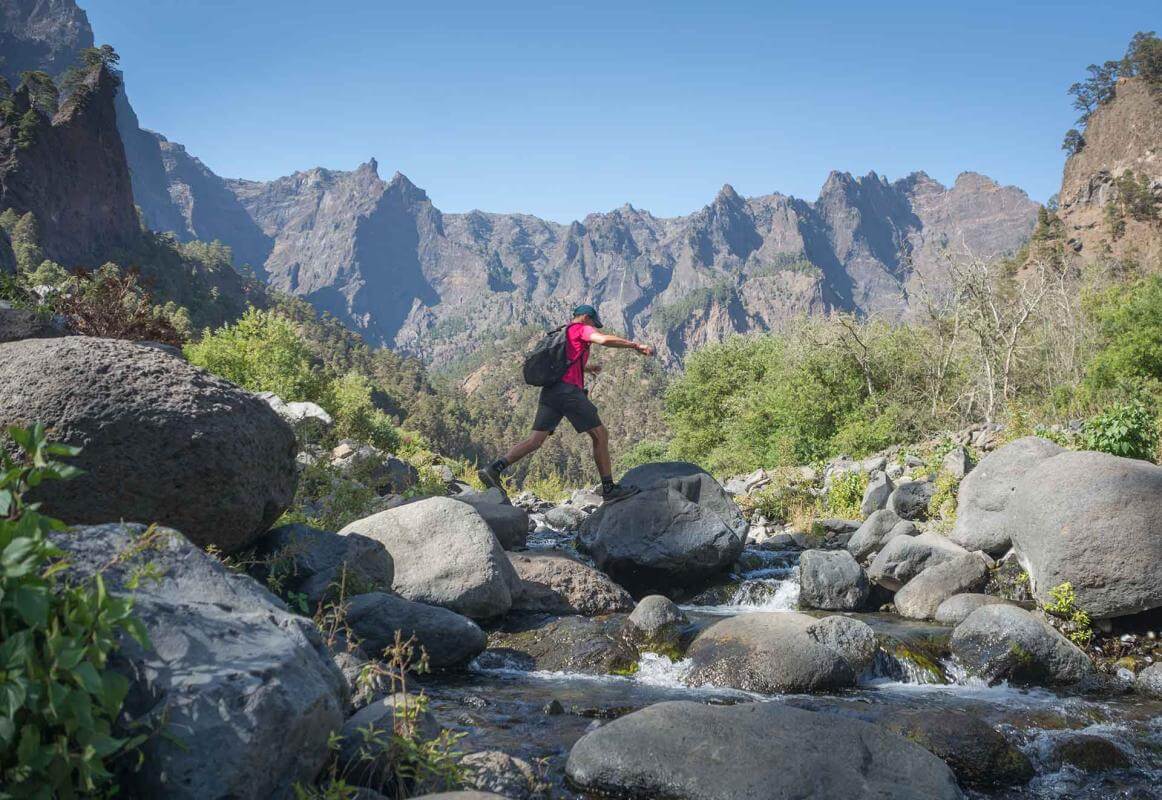



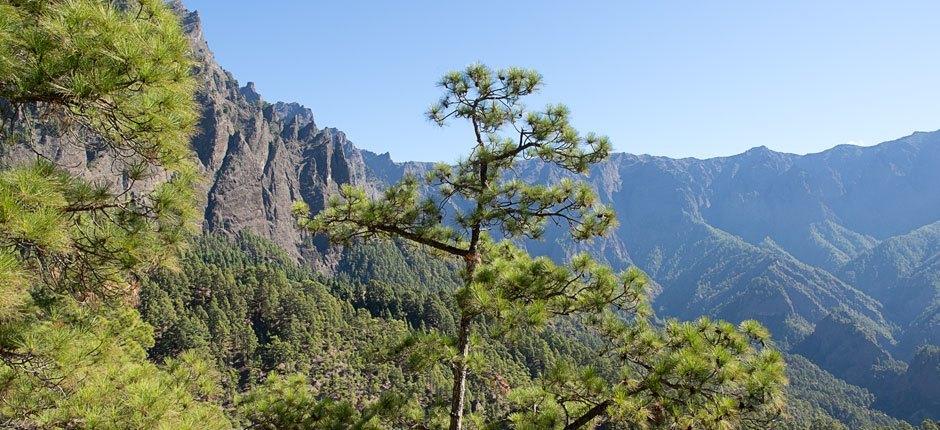

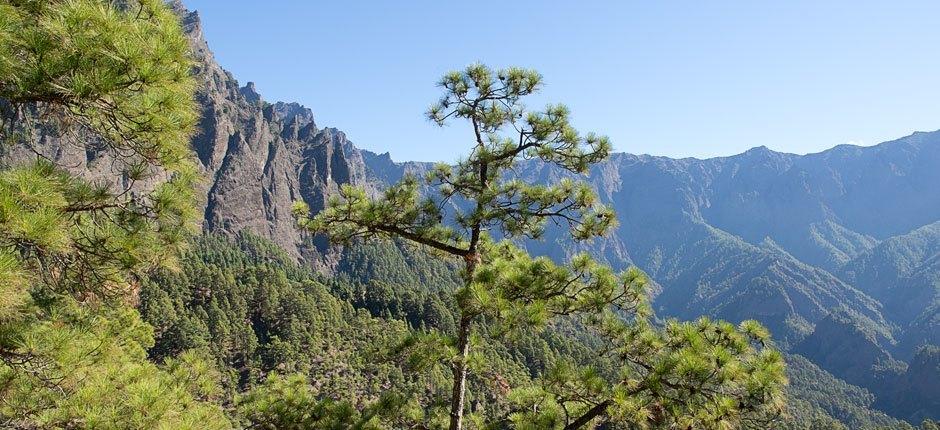
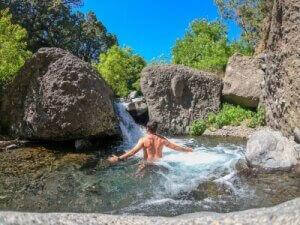

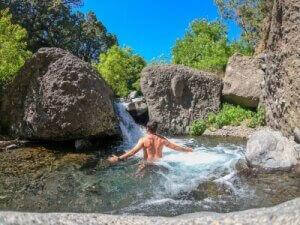
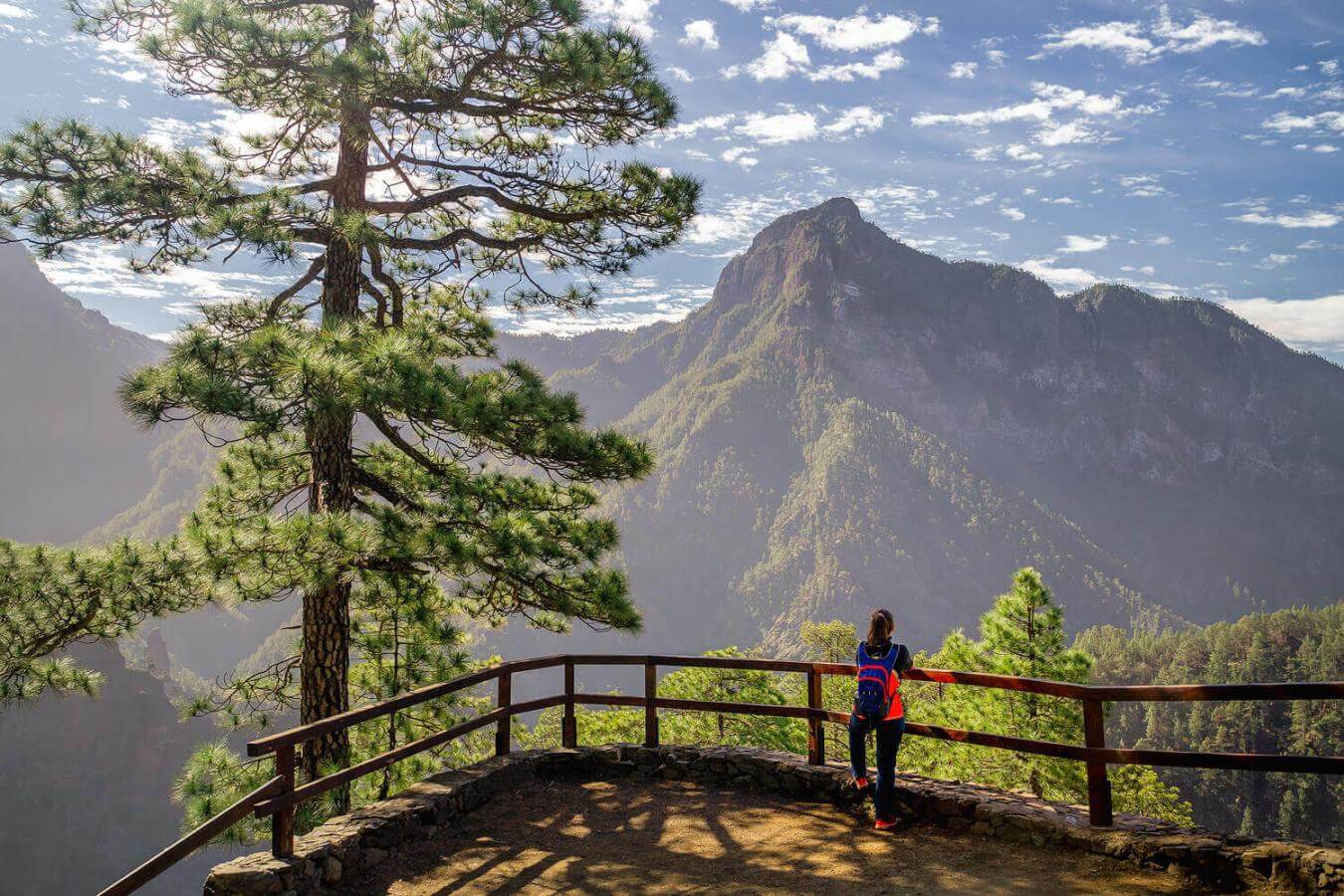

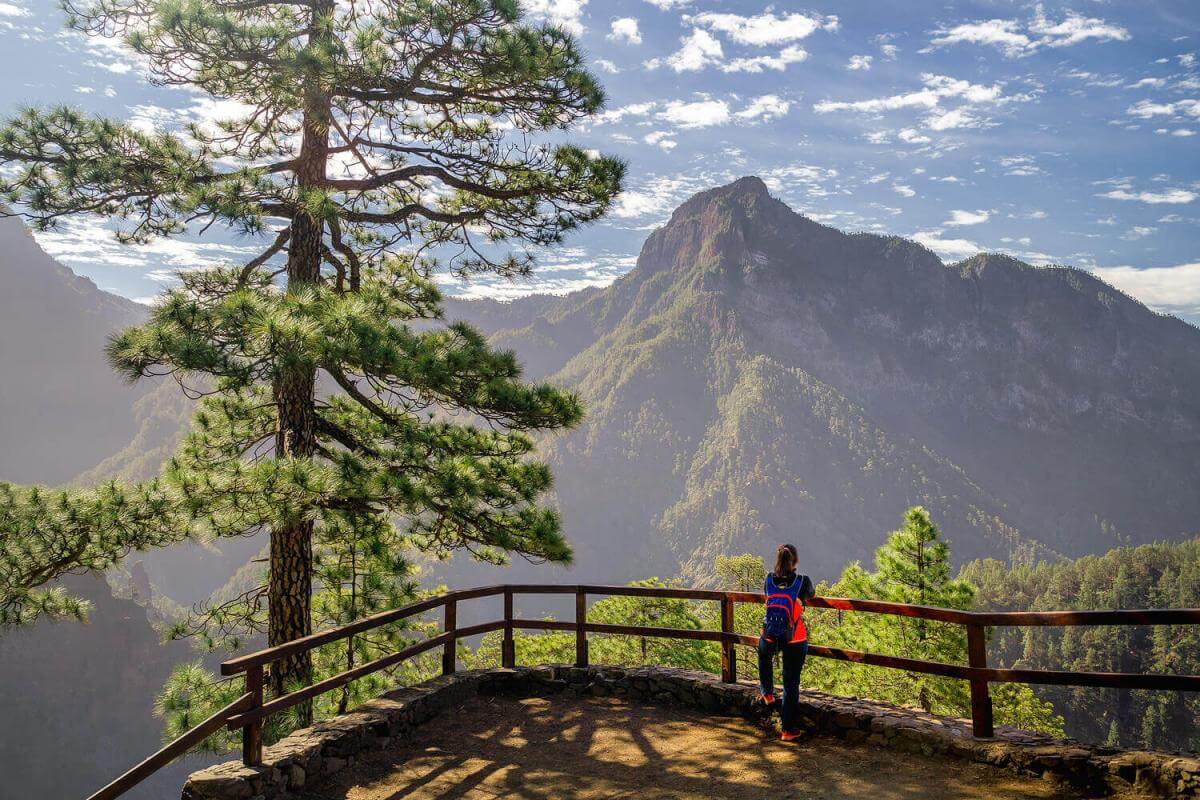
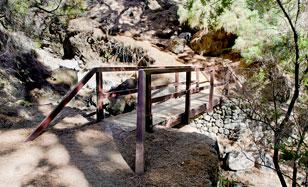
The trail begins at the lay-by for vehicle access, gently winding around a slope home to a pine forest including Myrica faya, heather and other shrubs such as Cistus. The route will cross a series of ravines, with the first, known as Ciempiés, always full of water.
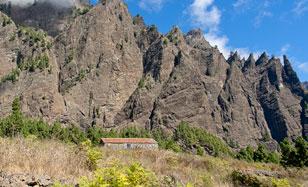
This area found in the interior of the park serves as a reminder of La Caldera’s history in agriculture and livestock. Up until quite recently, the orchards found here were used to grow tobacco, with the outlines of the plots still visible today. The panoramic view of Los Agujeritos is particularly beautiful, with the jagged vertical rock faces standing out like teeth in the landscape.
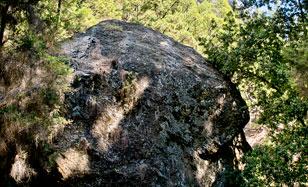
Shortly after moving on from Lomo de Tenerra, the next eye-catching landmark is a gigantic rock in las Traves Ravine. Deposited in the river channel, the rock is a visual reminder of the erosion that created La Caldera and a showcase of rock flora, such as the various species of tree houseleeks belonging to the Aeonium genus that expertly snake up rocks and vertical rock faces.
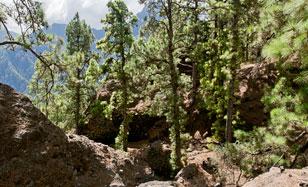
The processes of erosion cause constant rock fall in La Caldera. This ravine is a fine example, and we can see straightaway why the park is named for its rounded rocks. A glance up to the higher walls quickly gives us an idea of how this spectacular river channel was formed over time. Archaeological remains have been found in the region, as La Palma’s native peoples used some of these gigantic rocks as refuges.
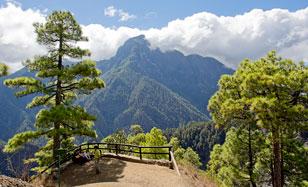
This spectacular panorama of La Caldera features a striking set of sedimentary rocks to the left, while to the right we can see an area of vegetation on the slope marking the source of Indian bay, formerly used by farmers for growing yams.
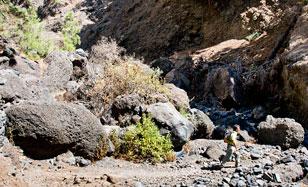
This ravine is typical of the park’s interior, revealing the effects of the processes of erosion. Along with the Risco Liso Ravine, it surrounds a region used for cultivation up until the 1980s, and which is currently under reforestation. The higher reaches of the ravines are home to various springs and gallery forests at the sources of the park’s main water resources.
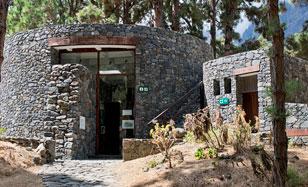
This ravine deposit has become known as Taburiente beach, due to its popularity as a bathing spot among locals. The small forest of willow trees on the riverbank represents the best example of its type in the park. Willow trees have fallen into decline due to the removal of water from rivers for water resources, lending this area a particular significance and providing an opportunity for the park to increase its extension
Visitors to Taburiente beach will find a visitors’ centre, a campsite, a small exhibition, services and a first aid post.
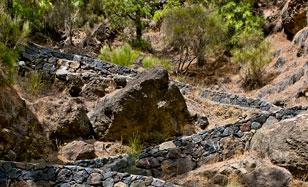
Making our way past the visitors’ centre brings us onto a different slope as we begin snaking down Alemendro Amargo Ravine. Known as El Reventón, the descent is particularly uneven, starting with the river at over 100 metres above sea level. On our descent, we’ll spot Idafe Rock rising up where the ravines meet. This spectacular monolith is linked to the magical religious world of the benahoritas, the indigenous inhabitants of La Palma.
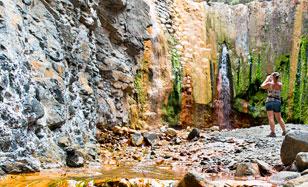
Moving down past Idafe Rock leads us to the confluence of the Almendro Amargo Ravine (which we’ve just followed down) with the Limonero or Rivaceras Ravine, which stands out for the yellowish tone of its water, due to the iron ore present at the source. A 10-minute ascent upstream leads us to the Cascada de Colores waterfall, a small natural drop to have been artificially enhanced, where the combination of the yellowish water and the surrounding mosses creates a true feast for the eyes.
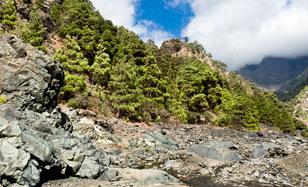
The waters of the Taburiente and Alemendro Amargo Ravines mix at this point, making their way down Las Angustias Ravine to leave La Caldera at the river mouth. A concrete construction may be spotted on the ravine banks, and this is used to divert the river water for agricultural use. The construction uses an ingenious system to remove solids that slow the water flow, meaning it must be cleaned periodically.
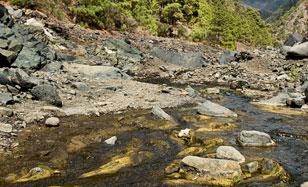
The last five kilometres running along the ravine and the surrounding slopes are across slightly more challenging terrain. The vegetation progressively shifts from pines to shrub formations dotted with Tabaibas by the end, and all of this is offset by the beautiful geological features of the walls of the river channel.
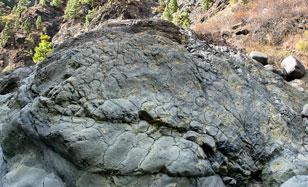
The most striking feature in the final part of the route is the so-called basal complex, formed of rocks to have been produced in underwater eruptions during the process by which the island was created. It is only in the more shallow areas of Las Angustias Ravine that such rocks are visible on La Palma, with the geological phenomenon only seen in one other part of the Canary Islands in Fuerteventura. The rocks stand out for their green colour and format in a series of small cavities, normally separated by a line of rock in a different colour
- Never leave waste of any type lying around, including cigarette butts. Leftover food leads to a proliferation of rats and wild cats, which pose a serious threat to the fauna.
- Respect the animals. Do not bother them or feed them. If you see an injured specimen, you can call the emergency number: 112. Do not pick flowers or plants.
- Do not pick up or take away stones or any other item from the natural environment. And do not move them to pile them up into sadly famous 'towers'.
- Respect the signposting along trails. Leaving the set paths causes damage to the environment and could also be dangerous for you and anyone with you.
- It is safer to keep your pet on a lead.
- Try not to alter the peace of the environment with excessive noise (loud music, yelling, etc.).


